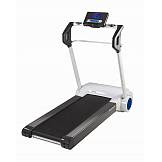
I had a small amount of free time recently and rather than program I decided to hook up my old Speccy to an Amstrad CPC monitor to get an improved picture of scart quality. The old Amstrad CPC CTM 644 monitors are very cheap at car boot sales these days (if you can find them) but brilliant for retro gaming as Amigas and other computers can be connected to them. Here's a short how to on how I made a Spectrum +3 RGB cable (should also work for black +2A/2B) which connects to an Amstrad CTM644 monitor
I've never made a cable before and just needed a soldering iron and the parts below. You need the following components from
Maplin:
| Maplin Code | Details |
| FJ91Y | 1x DIN Plug 8-Pin Circ |
| HH45Y | 1x DIN Line Scket 6-Pin |
| XS42V | 1x 9 Way Cable (1 metre of screened scart cable) |
| M330R | 3x 330 Ohm Resistors (Optional! See below) |
Total cost is £5.23 at today's prices.The 8 pin DIN plug is the end for the Spectrum, the 6 pin socket connects to the CTM644's plug lead.
Only 5 wires are connected in the cable, red, green, blue, composite sync, and ground. The cable does not transfer sound as the CTM644 does not have any speakers. It has been mentioned on
World Of Spectrum forums that the Spectrum's output to the monitor is too bright - I haven't had a problem and I assume below you won't be using/connecting the resistors, do this at your own risk, but should you need to they should go on the red green and blue pins. The resistors can be fitted any way around (but try and remain consistent). When using the monitor I found the brightness setting on the CTM644 needs to be at minimum.
The DIN socket has small "sewing needle" holed hooks to run stripped back wire into which can then be soldered to hold the wires in place. The DIN plug has tiny holes in the end of the pins for which stripped back wires can be inserted slightly, enough to hold for soldering.
The following image shows the pins from the back, i.e. the side you are soldering on. Apologies I'm not an electrician, my schematics are a bit naff :)

Things to watch for:- The 8 pin plug is "reversible", i.e. don't solder the pins on the wrong side otherwise the pins don't go into the spectrum all the way (yes I did this before I realised the pins had holes down the length on one side).
- Be careful that solder doesn't join the pins.
- The DIN plastic melts if you apply the iron too long to the pins so make sure you solder quickly.
- There are metal pincer like pieces on the DINs' inner metal shielding (under the plug plastic cover). This is intended to clamp the cable (not the inner wires) after you have finished soldering so that the outer plastic cover, which fits the shielding grooves, holds the outer cable when you force it into the Spectrum/insert CTM plug.
Disclaimer:I take no responsibility for mistakes in the above, if you break or hurt anything following these instructions, including exploding your monitor!






